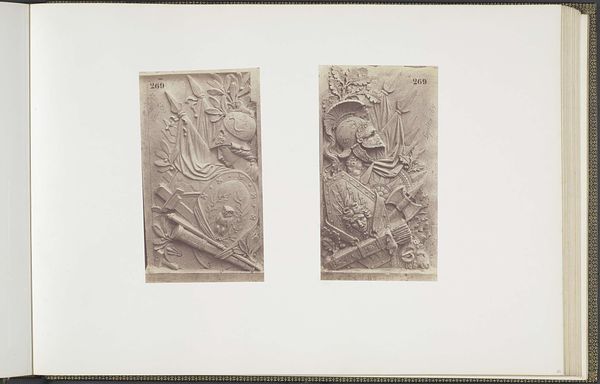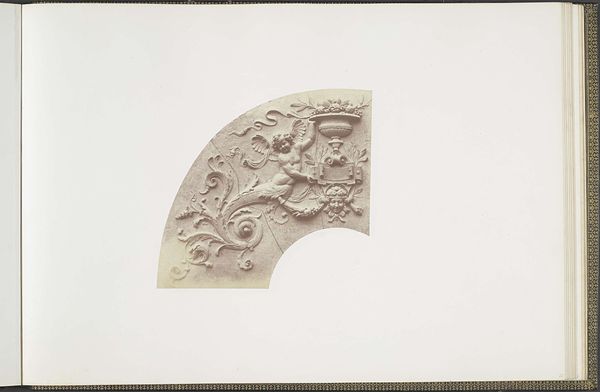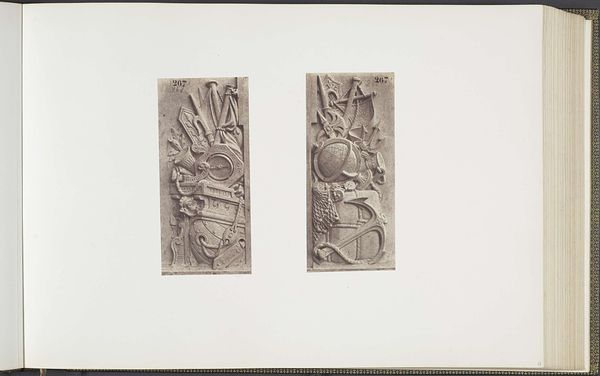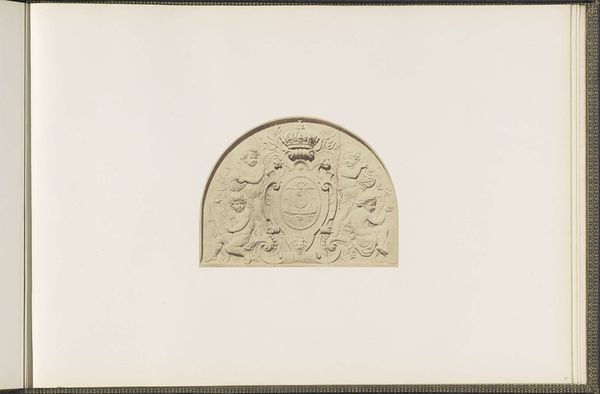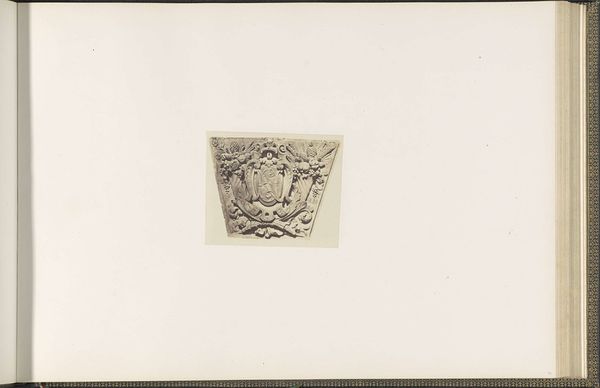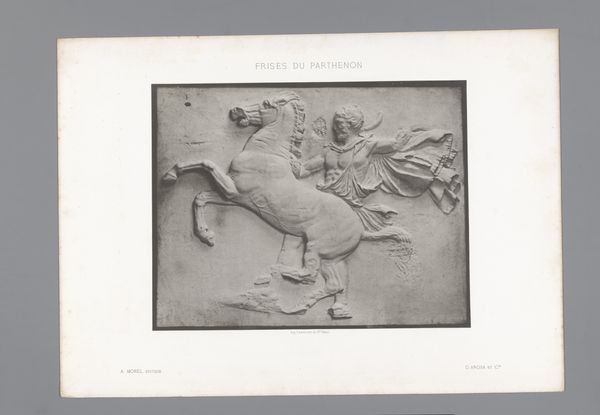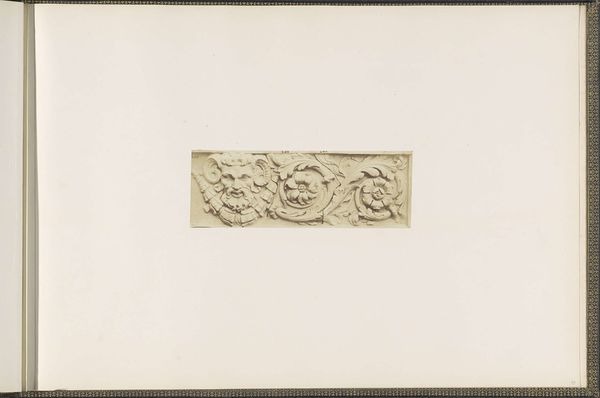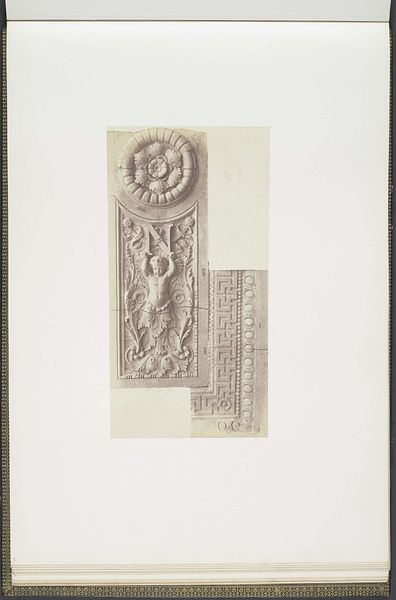
Gipsmodellen voor beeldhouwwerken op het Palais du Louvre: links "Trophée d'armes" door Ambroise Choiselat en rechts "Trophée d'armes et d'attributs des arts" door Pierre Rouillard c. 1855 - 1857
0:00
0:00
photography, sculpture, gelatin-silver-print
#
neoclacissism
#
photography
#
sculpture
#
gelatin-silver-print
Dimensions: height 378 mm, width 556 mm
Copyright: Rijks Museum: Open Domain
Curator: Here at the Rijksmuseum, we have a captivating gelatin-silver print by Edouard Baldus, created circa 1855-1857. It depicts plaster models for sculptures destined for the Palais du Louvre: on the left, "Trophée d'armes" by Ambroise Choiselat, and on the right, "Trophée d'armes et d'attributs des arts" by Pierre Rouillard. Editor: Immediately, I’m struck by the formality and the sheer density of detail within each of these compositions. They feel both triumphant and incredibly restrained, almost fossilized, because we’re looking at photographs of plaster casts of things on the Louvre. Curator: Yes, and situating it historically, we’re looking at the height of French Neoclassicism, a movement deeply intertwined with power and the reinvention of the French state during and after the Revolution. Think of Jacques-Louis David. These sculptural trophies visually reinforce that ambition. Editor: Precisely! Notice how Baldus’s photograph preserves, maybe even amplifies, the symbolic vocabulary. The weapons on the left stand for power, the instruments on the right represent the arts – they’re standard metaphors that build up ideas about French civilization. But I’m also curious how these trophies communicated French empire or expansion, even subtly. Curator: Definitely, and consider that this commission came about during Napoleon III’s reign. France was solidifying its colonial reach, and this imagery, even displayed at home, reinforces an idea of dominance. The weapons trophy would have triggered those associations, speaking directly to both power and a show of cultural sophistication. Editor: Thinking about the context of image-making too, it's fascinating how photography starts documenting these monumental art forms as part of nation-building and identity. Curator: Agreed. Before widespread photographic reproduction, images of these sculptures circulated much less. Photography creates broader accessibility to a shared visual culture, in turn reinforcing dominant ideologies. Editor: Right. In looking at it more closely, the contrast between the softness of the plaster and the sharpness of the gelatin-silver print gives me pause for thought too, an indexical relation across time as one solid gives way to another...it also enhances that feeling of the sculptures' imposing presence! Curator: It’s really powerful to think of this image as part of a larger historical narrative about nationhood and the control of images and ideologies in that formative mid-19th century moment. Editor: Absolutely. Thinking through how cultural and national symbols, whether instruments or arms, can resonate so clearly. Thank you.
Comments
No comments
Be the first to comment and join the conversation on the ultimate creative platform.

